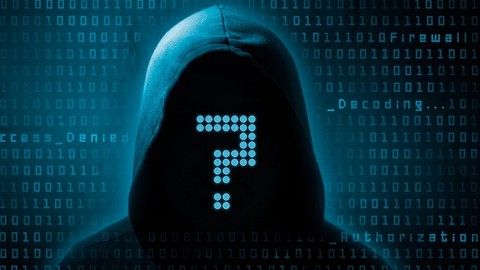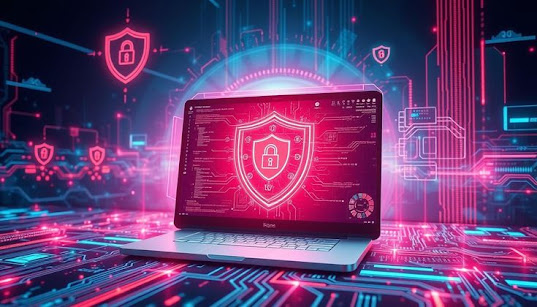"The Rise of Autonomous Threat Detection: How AI Is Replacing Security Analysts"
The Rise of Autonomous Threat Detection: How AI Is Replacing Security Analysts
Cybersecurity in 2025 is entering a phase that few predicted with accuracy: a realm where machines are not just assisting human analysts but are replacing many of them. What was once the domain of elite security professionals is now being transformed by AI-driven autonomous threat detection systems. These systems operate 24/7, process terabytes of data per second, and make split-second decisions that would take a human hours to analyze.
This shift is not just a trend—it's a necessity. As cyberattacks become more sophisticated, frequent, and fast, the traditional security models that rely heavily on human monitoring and manual response are crumbling. Enter AI: the most powerful ally—and, in some cases, the replacement—of security analysts worldwide.
Let’s dive deep into how AI is reshaping this space and why autonomous threat detection is becoming the backbone of modern cybersecurity.
The Problem with Traditional Security Models
In a traditional security operations center (SOC), analysts monitor dashboards, investigate alerts, and manually respond to threats. But in today’s threat landscape, this model struggles to keep up. The volume of threats is staggering. Analysts often experience alert fatigue, miss subtle indicators of compromise, and spend hours or days tracking down incidents. Not to mention, the cybersecurity talent shortage is worsening.
Human analysts simply cannot scale to the pace and scale of modern cyber warfare. Organizations need systems that detect, interpret, and act autonomously—without waiting for human input.
What Is Autonomous Threat Detection?
Autonomous threat detection is the use of AI and machine learning algorithms to monitor network traffic, identify anomalies, correlate events, and initiate responses—all without human intervention. It involves:
- Real-time behavioral analysis
- Machine learning-driven anomaly detection
- Automated threat classification
- Autonomous incident response workflows
Unlike traditional systems that depend on signature-based detection (like antivirus programs), autonomous systems learn from data. They detect previously unknown threats, adapt over time, and even neutralize attacks before analysts are aware something’s wrong.
AI Tools Leading the Charge
There’s a rapidly growing ecosystem of platforms making autonomous cybersecurity a reality. Tools like Darktrace, CrowdStrike Falcon, SentinelOne, and Microsoft Security Copilot integrate AI models that can identify suspicious behavior in milliseconds.
These platforms combine endpoint detection, network traffic analysis, behavioral baselining, and predictive analytics to form a highly accurate, low-latency defense system. Some even use generative AI to simulate attacks or create synthetic training data for deeper learning.
Benefits of Autonomous Threat Detection
1. Speed: AI responds in real time, reducing dwell time and mitigating damage within seconds.
2. Accuracy: Machine learning reduces false positives by learning from patterns over time.
3. Scalability: AI systems handle huge volumes of data that would overwhelm any human team.
4. Availability: These systems don’t sleep, take breaks, or get fatigued. They're always on.
Challenges and Concerns
However, the rise of autonomous cybersecurity isn’t without risks. AI systems can be fooled by adversarial attacks—maliciously crafted data that misleads AI models. Over-reliance on automation can also result in blind spots if the AI misses something unique.
Moreover, AI decisions can lack transparency. When an autonomous system flags or quarantines a critical system without explaining why, it can lead to mistrust or operational disruptions. This highlights the need for explainable AI (XAI) in security tools.
The Displacement of Human Analysts
So, is AI replacing human security analysts? In some areas, yes. Routine monitoring, alert triage, and initial threat containment are increasingly automated. Entry-level SOC roles are particularly at risk. But instead of elimination, many roles are evolving.
Analysts are moving towards roles that require human judgment—such as threat hunting, AI model auditing, policy setting, and adversarial thinking. The future analyst must be AI-literate, capable of interpreting machine results and ensuring ethical operations.
Real-World Use Cases
Let’s look at real-world scenarios. A multinational bank uses AI to monitor over 100 million transactions daily, flagging fraud in real-time without human intervention. A healthcare provider deploys AI to detect ransomware signatures before encryption starts. Government agencies are using autonomous systems to detect state-sponsored cyber campaigns targeting critical infrastructure.
In all these cases, the common theme is clear: speed, scale, and intelligence matter more than ever.
What the Future Looks Like
In the next five years, autonomous cybersecurity systems will become the norm, not the exception. AI will be embedded not just in defense tools, but also in every app, cloud platform, and device. We’ll see AI fighting AI as hackers deploy machine-driven attacks that must be countered in real-time.
The organizations that thrive in this landscape will be those who can blend human insight with autonomous power. That means building cyber teams that understand machine learning, model behavior, and ethical AI use, alongside traditional network and system security.
Final Thoughts
We’re witnessing the rise of an era where AI doesn’t just support cybersecurity—it leads it. Autonomous threat detection is no longer a futuristic idea but a present-day solution reshaping how we protect digital infrastructure.
Rather than fearing the replacement of human analysts, the security community must embrace this change. By combining human creativity and ethical oversight with AI’s speed and precision, we can build a cybersecurity model that’s truly resilient and future-proof.
Cybersecurity is evolving—and it’s doing so with machines at the wheel.




Comments
Post a Comment